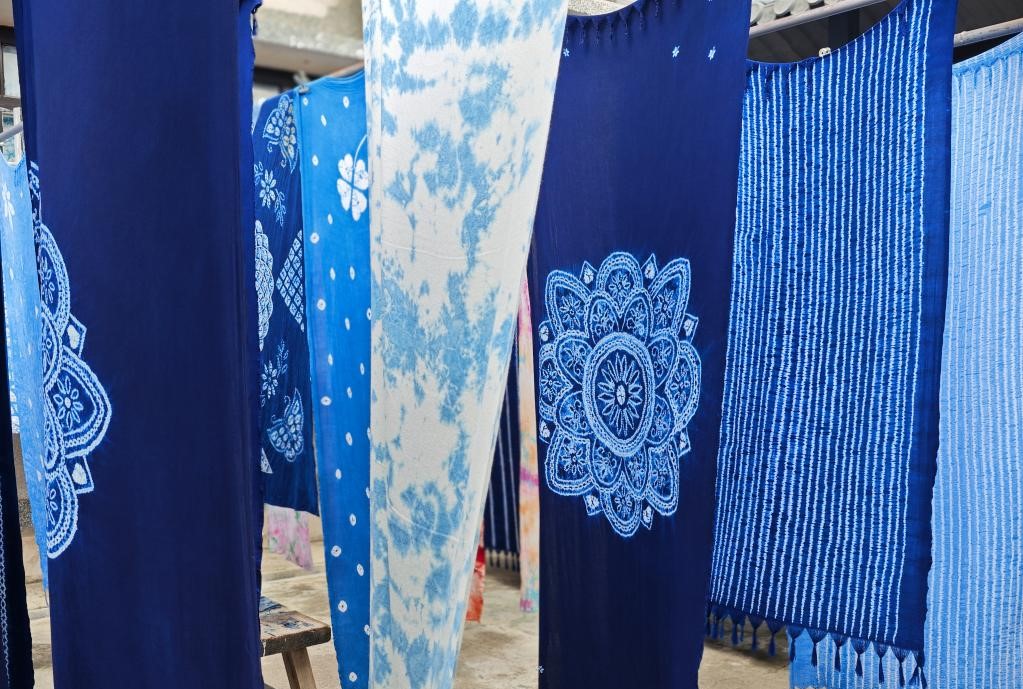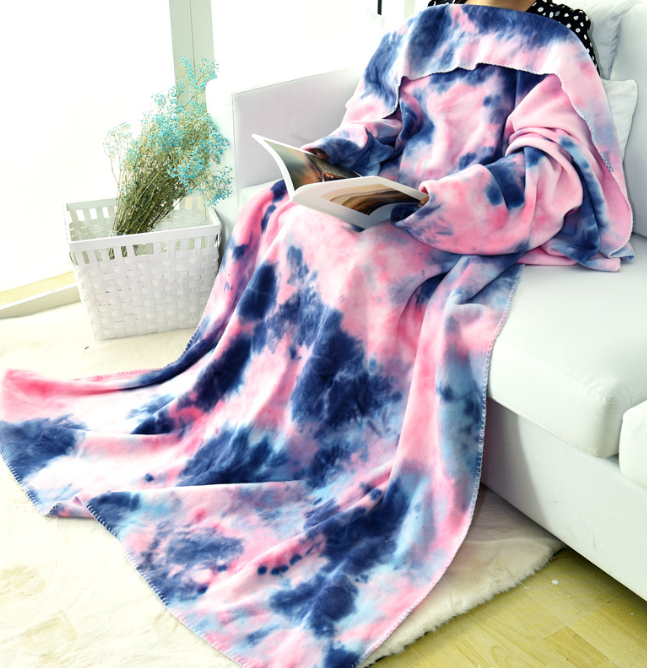Tie-dyeing has a long history among the Chinese people. It is a printing and dyeing technique that twists and ties the dyed fabric so that it cannot be colored uniformly. The tie-dyeing process is divided into two parts: tying and dyeing. It uses yarn, thread, rope and other tools to tie, sew, bind, sew, clip and other forms of fabric before dyeing. Its purpose is to prevent the tied part of the fabric from being dyed, so that the tied part maintains the original color, while the untied part is evenly dyed. Thus, uneven shades and rich layers of color halo and wrinkle prints are formed. The tighter and more firmly the fabric is tied, the better the anti-dyeing effect.
Tie-dyeing means that after the fabric is selected, according to the requirements of the pattern, wrinkles, folds, rolls, squeezes and pulls are used on the fabric to make it into a certain shape, and then it is sewn or tied with needle and thread stitch by stitch to tie it tightly. Dip dyeing means soaking the tied cloth in clean water first, then putting it into the dye vat, or soaking it for cold dyeing, or heating it for hot dyeing, and then taking it out to dry after a certain period of time, and then putting the cloth into the dye vat for dip dyeing. Repeated dip dyeing, each dip deepens the color. Tie-dyeing is a peaceful and tranquil world composed of blue and white as the main tones, that is, the contrast of blue and white is used to create a simple and simple meaning, and the combination of blue and white often gives people a sense of elegance like “blue and white porcelain”, and peace and tolerance are more reflected in the tie-dyeing sky.
Tie-dye dyes are generally made of cotton white cloth or cotton and linen blended white cloth. The main dyes come from the indigo solution of natural plants such as indigo, isatis root, and mugwort growing on Cangshan Mountain, especially isatis root.
In the past, the isatis root used for dyeing cloth was all wild in the mountains. It is a perennial herb with small pink flowers. Later, as the amount of use increased, cloth dyers planted it in the mountains. The good ones can grow to half a person’s height. They are harvested in March and April every year. First, soak it in water, pour it into a large wooden dye vat, add some lime or industrial alkali, and then it can be used to dye cloth.
Immersion dyeing pattern: When the dyeing reaches a certain degree, take it out and put it in clean water to rinse off the excess dye. After drying, remove the valerian knot, pick up the “lumps”, iron it flat, and the part tied and sewn by the thread is not dyed, showing a hollow white cloth color, which is the “flower”; the rest of the part is dark blue, which is the “ground”, and a pattern of blue background and white flowers appears. At this point, a beautiful tie-dyed cloth is completed. Tie-dyeing often also presents a certain transitional gradient effect, with many ice cracks, natural and lively, overcoming the dullness of the picture and pattern, making the color more rich and natural.
Tie-dyeing is a unique art form in traditional printing and dyeing techniques. It has always been embellished in people’s lives with its plain and natural appearance. It is not easy to be noticed but can release charming brilliance. The fabrics after tie-dyeing have both the simple beauty of thick and flowing modern beauty; both the beauty of symmetrical patterns and the beauty of complex integration.
Tie-dyeing technology is widely used in clothing, towels, home textiles, blankets, bedding, etc., presenting many classical and modern artistic creations. As one of the epitomes of history and culture for thousands of years, tie-dyeing technology is still popular today and is widely used in Japan, India, Cambodia, Thailand and other places.
Post time: Oct-18-2024



